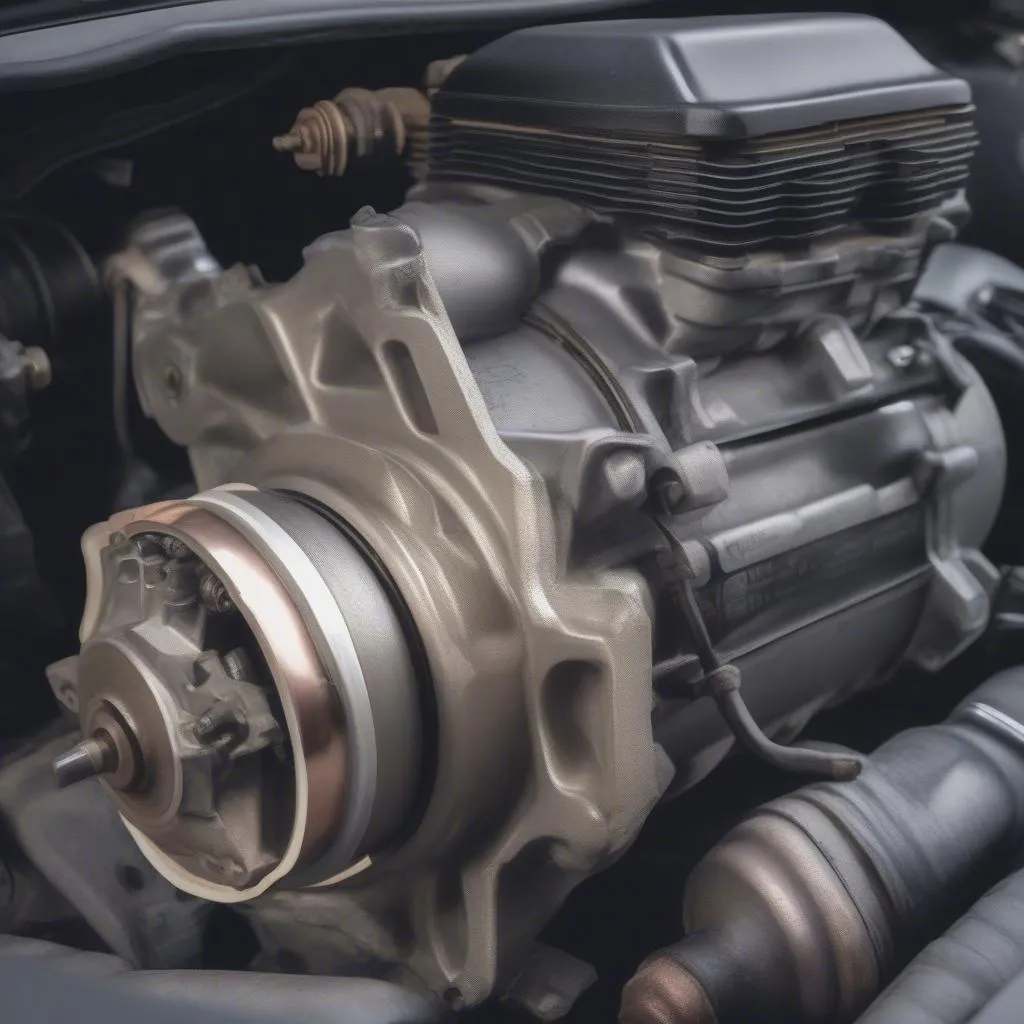You’re about to head out to work or a much-anticipated event, and you turn the key in your car’s ignition. The engine cranks, but it just won’t turn over. Frustration sets in, and you’re left wondering what’s wrong with your car. This is a common problem that can be caused by a variety of factors.
Understanding the Issue: What Does “Car Cranks But Won’t Turn Over” Mean?
When your car cranks, it means the starter motor is working and turning the engine. However, the engine is not actually firing, which is what makes the car run. This can be a frustrating situation, especially when you’re in a hurry. But don’t worry, we’re here to help you understand what’s happening and how to tackle the problem.
Diagnosing the Problem: Why Your Car Won’t Start After Cranking
1. Dead Battery:
A dead battery is the most common reason why a car cranks but won’t turn over. The battery provides the power to start the engine, and if it’s not working, the engine won’t fire. You can usually tell if your battery is dead if the headlights are dim or the car’s electrical system is sluggish.
2. Faulty Starter:
The starter motor is responsible for turning the engine over. If the starter is faulty, it won’t be able to provide enough power to turn the engine. This can happen if the starter is worn out, has a bad connection, or is damaged.
3. Fuel System Issues:
Your car needs fuel to run. If there’s a problem with the fuel system, such as a clogged fuel filter or a faulty fuel pump, the engine won’t be able to get the fuel it needs to start.
4. Spark Plugs or Ignition System Issues:
Spark plugs ignite the air-fuel mixture in the engine’s cylinders. If the spark plugs are fouled or the ignition system is faulty, the spark won’t be strong enough to ignite the fuel.
5. Engine Sensor Problems:
Your car’s computer relies on sensors to monitor the engine’s performance. If a sensor is faulty, it can send the wrong information to the computer, preventing the engine from starting.
6. Timing Belt Issues:
The timing belt is responsible for synchronizing the crankshaft and camshaft. If the timing belt breaks, the engine’s valves will not open and close correctly, preventing the engine from starting.
Troubleshooting: What Can You Do?
Now that we’ve gone through some common causes, let’s move on to some practical steps you can take to troubleshoot the problem.
-
Check the Battery: Start by checking the battery terminals for corrosion and ensure they are securely attached. You can also use a multimeter to test the battery’s voltage. If the battery is weak or dead, you can try jump-starting it.
-
Check the Starter: Listen for any unusual sounds or noises coming from the starter motor. If you hear a clicking sound, it could indicate a faulty starter solenoid.
-
Check the Fuel System: Look for any signs of leaks or damage to the fuel lines. You can also check the fuel filter to see if it is clogged.
-
Check the Spark Plugs: Remove the spark plugs and examine them for wear or damage. You can also check the spark plug wires for cracks or corrosion.
-
Check the Ignition System: Inspect the distributor cap, rotor, and ignition coil for any signs of damage or wear.
Seeking Professional Help: When to Call a Mechanic
If you’re not comfortable troubleshooting the problem yourself, it’s always best to call a qualified mechanic. A mechanic can diagnose the problem and recommend the best course of action.
FAQs: Common Questions About Cars That Crank But Won’t Turn Over
1. Can I jump-start my car if it’s only cranking?
Yes, jump-starting can be a temporary solution if the issue is a dead battery.
2. Is there a way to tell if the starter is bad?
Yes, you can listen for clicking or grinding noises.
3. How often should I replace my spark plugs?
Most car manufacturers recommend replacing your spark plugs every 30,000 to 100,000 miles.
4. What happens if the timing belt breaks?
A broken timing belt can cause serious engine damage, so it’s important to have it replaced regularly.
5. What are some signs of a faulty fuel pump?
You may notice a decrease in fuel pressure, a sputtering engine, or a complete lack of fuel delivery.
Next Steps: Getting Your Car Back On The Road
It’s always better to be prepared, and knowing about these common causes can help you quickly understand what’s happening with your car and even diagnose the problem yourself. However, if you’re unsure about the issue, or your car continues to experience problems, it’s best to seek out a professional mechanic.
 starter-motor-problem
starter-motor-problem
If you’re struggling to diagnose or fix your car problem, we’re here to help. We offer professional diagnostics and repair services for all types of European cars.
We’re just a call away – Whatsapp: +84767531508. We’re available 24/7 to help you get your car back on the road!
 car-diagnostics-tool
car-diagnostics-tool
 car-engine-problem
car-engine-problem
If you found this article helpful, share it with your friends!
For more helpful articles and resources, check out these related articles on Diag XCar: